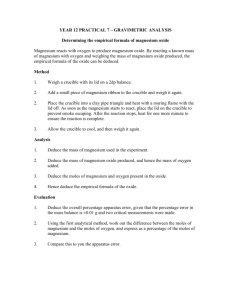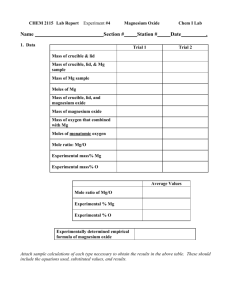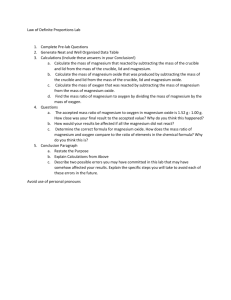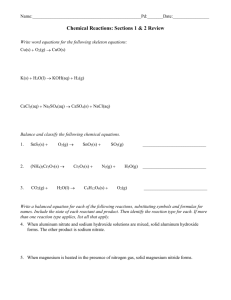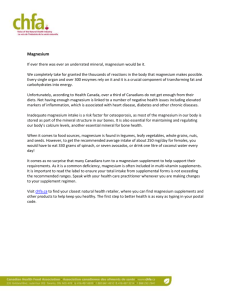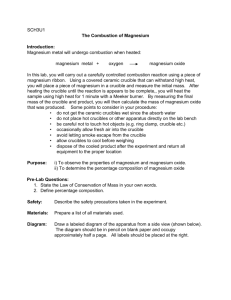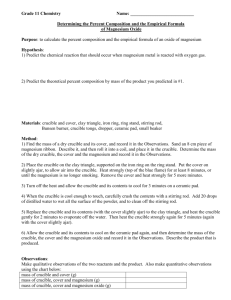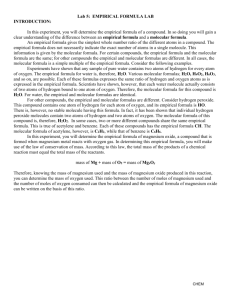Magnesium Oxide Lab Report: Experiment & Analysis
advertisement
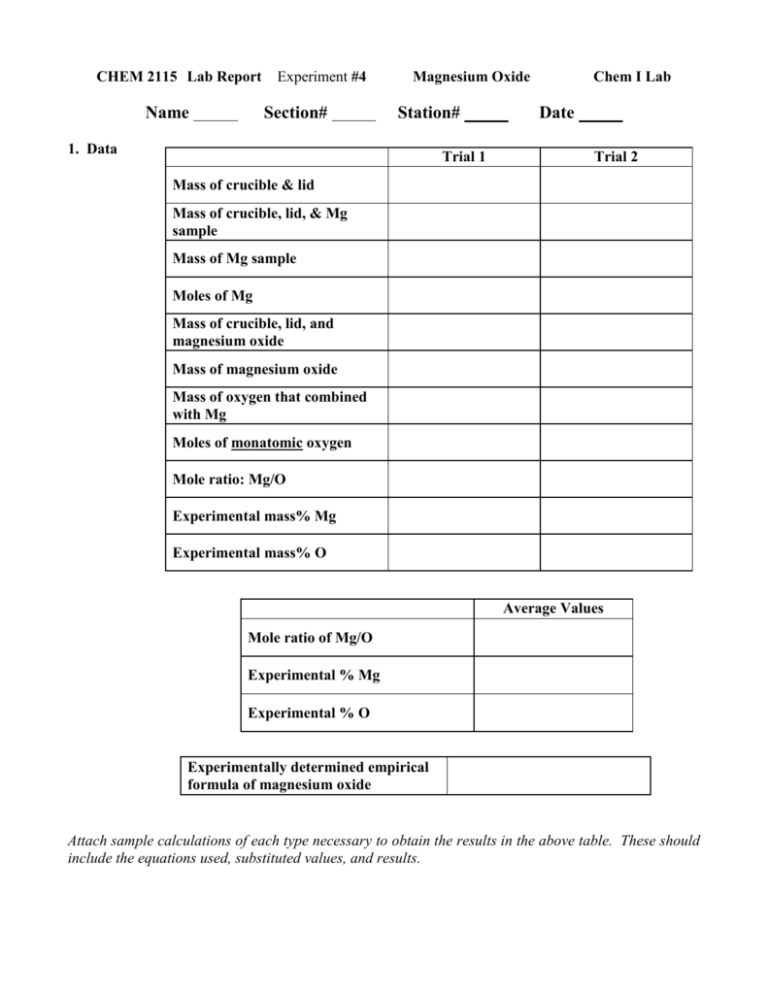
CHEM 2115 Lab Report Name Experiment #4 Section# Magnesium Oxide Station# 1. Data Trial 1 Chem I Lab Date Trial 2 Mass of crucible & lid Mass of crucible, lid, & Mg sample Mass of Mg sample Moles of Mg Mass of crucible, lid, and magnesium oxide Mass of magnesium oxide Mass of oxygen that combined with Mg Moles of monatomic oxygen Mole ratio: Mg/O Experimental mass% Mg Experimental mass% O Average Values Mole ratio of Mg/O Experimental % Mg Experimental % O Experimentally determined empirical formula of magnesium oxide Attach sample calculations of each type necessary to obtain the results in the above table. These should include the equations used, substituted values, and results. 2. If a 0.192 g sample of copper metal reacts with elemental sulfur to form 0.240 g of the sulfide product, (a) find the percent by mass of copper and sulfur in the product and (b) find the empirical formula of the copper sulfide. Please show your work. 3. Data Analysis: Class data for this experiment is available on Blackboard. Use Excel to determine the values for the mass % magnesium and mass % oxygen for each data set in your class and find the class averages. Prepare a Table of Results that contains the following: (1) your average value, (2) the class average, (3) the theoretical value, (4) your difference, relative to the class value and (5) the class relative error. Definitions of relative difference and relative error are given on page IV-3 of the Lab Manual. Mass % Magnesium Mass % Oxygen Your Average Value Class Average Value Theoretical Value Your Difference, Relative To The Class Value Class relative error A. Discuss how well your results for the weight % magnesium agree with the class results. (Since the magnesium and oxygen results are related, only the magnesium results need be discussed.) In this discussion, refer to the data in your Table of Results. You should note which student data points, if any, were excluded. The goal of this discussion is to compare your experimental work to the class average. B. Discuss how well the class results agree with the theoretical expectation by referring to the class relative error from the Table of Results. C. Conclude your discussion by reporting the mole ratio of magnesium to oxygen, calculated from the class values for the experimental mass % magnesium and oxygen. Using this value, report the empirical formula of magnesium oxide and compare it to the theoretical formula. 4. Questions A. Suppose that the magnesium is not polished at the start of the experiment. Would the experimentally determined percent magnesium be too high, too low, or unaffected by this procedure? Explain why. B. In a hurry to complete the experiment a student spilled their crucible and lost some of the magnesium oxide product before the final weighing. Will the experimentally determined percent oxygen be reported too high or too low? Explain you answer.



